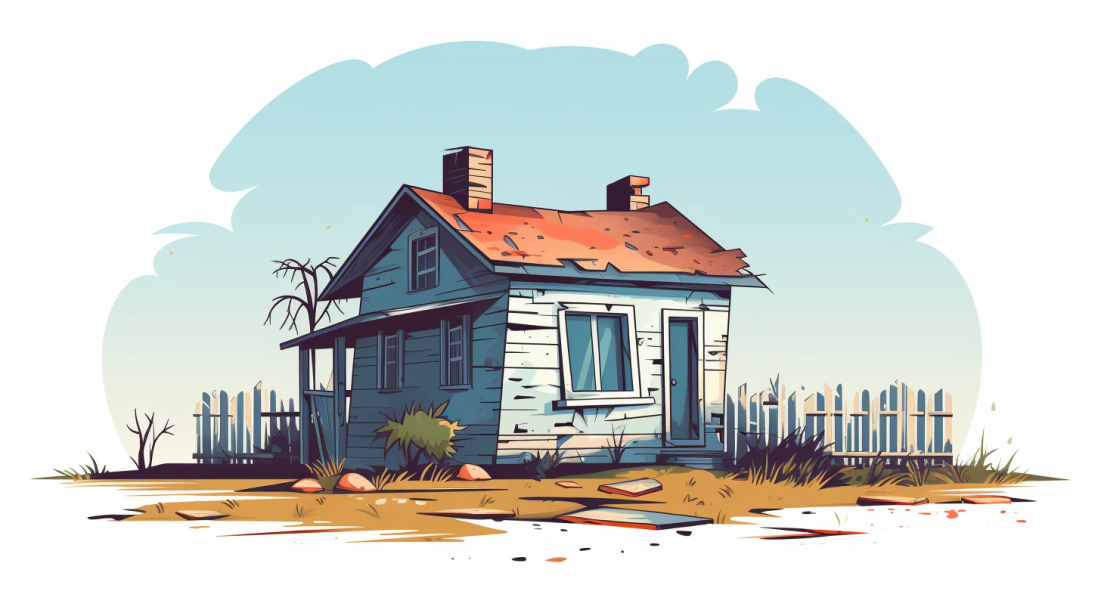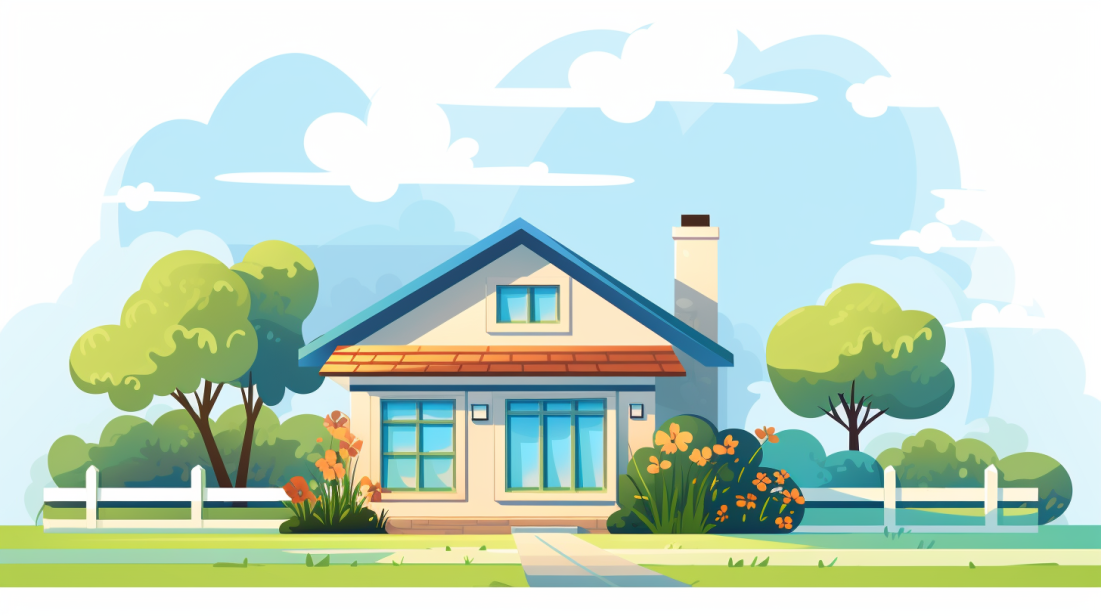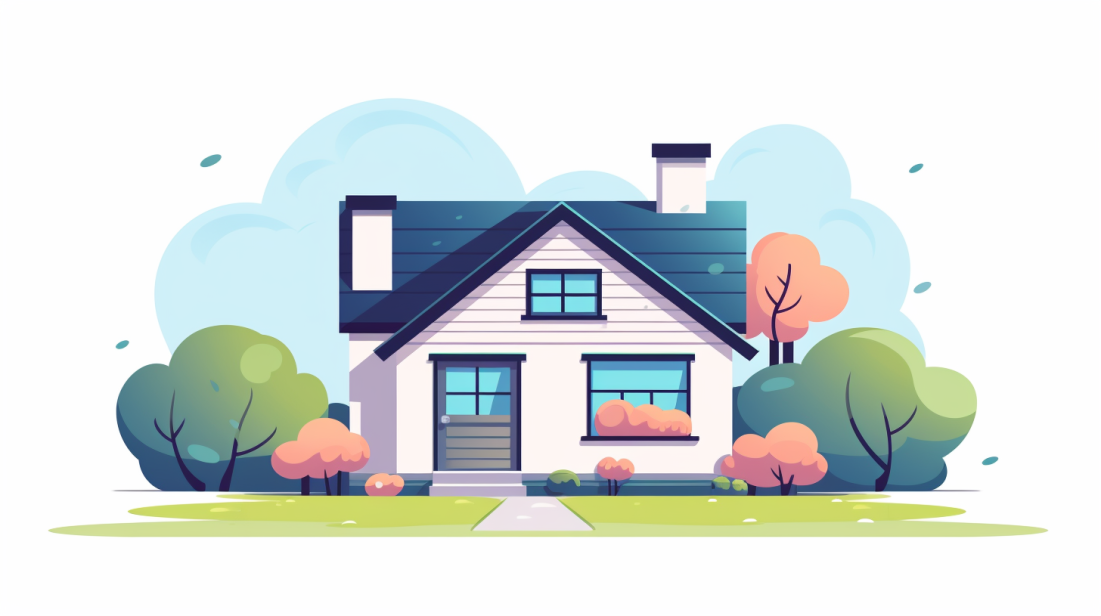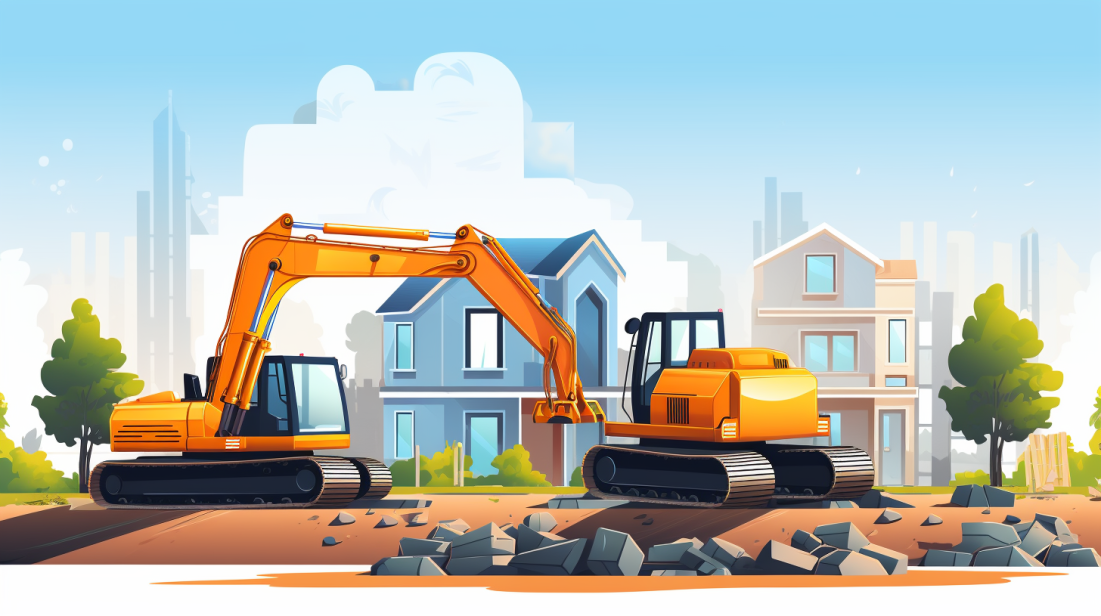How to Make Money Flipping Houses

Ever found yourself captivated by house-flipping shows, quietly musing over the possibility of bringing that screen fantasy into your own reality? You’re not alone – there’s something undeniably enticing about the thrill and potential profits of flipping houses.
Drawing from personal hands-on experience and countless hours delving into comprehensive research, this article will serve as your go-to guide for embarking on a potentially lucrative adventure through house flipping.
Eager to revolutionize your first property? Let’s venture ahead!
Key Takeaways
- House flipping is buying low – cost houses, fixing them up, and selling for profit.
- It’s key to avoid mistakes like lack of funds, time issues and poor skills.
- A good business plan helps guide your house flipping journey.
- Always inspect a home well before you buy it.
- Smart home repairs can raise the house’s value a lot.
- You need lots of knowledge to flip homes well; learn from experts whenever you can.
- Choosing the right way to pay for your project is important in making profits by house flipping.
Understanding House Flipping

House flipping is a way to make money with real estate. You buy a house at a low cost, fix it up nice, and then sell it for more than you paid. It seems simple on the face of things, but there’s quite a bit more to understand! Every flip starts with finding the best property to invest in.
That could be an old home sold cheap or maybe even one that’s in foreclosure.
Flipping isn’t all about making repairs and selling though. The money part also calls for careful thought as making the wrong decisions can mean a loss instead of profit! One key thing I look out for is buying low so there’s room for any unexpected costs during renovation.
Selling high quickly after gets me my return on investment without risk building up overtime!
Oh yes, time plays its part too – waiting around increases holding costs like mortgage payments and taxes among other things. Whew! House flipping sure has many sides but once understood completely; can open doors of wealth creation through real estate investing!
The Basics: How Flipping Houses Works
To flip a house, you must first buy it. You look for homes that cost less but can sell for much more once fixed. These are often old or run-down houses. You then fix these homes up to make them nice and new again.
This is called renovating. After fixing the house, you put it up for sale at a higher price than what you bought and spent on repairs. If all goes well, someone will buy your flipped house at this high price quickly so you can earn some profit from it! It’s like buying an old car, making it shiny and new again, then selling it off – only with houses instead of cars! To do all these perfectly requires having good knowledge of real estate market trends and being smart in spending money and time on improvements.
Common Mistakes to Avoid When Flipping Houses

Flipping houses can seem like a straightforward way to generate quick income, but it’s easy to go off course. Dive into detail on the most common mistakes such as insufficient funds, lack of time management and patience, inadequate skills and knowledge.
Uncover how you can turn these potential pitfalls into learning opportunities for your real estate journey – there’s so much more to find out!
Insufficient Funds
Not having enough money is a big problem when flipping houses. You need funds to buy the house and pay for repairs. More often, you spend more than planned on fixes or deal with unexpected problems like plumbing issues or electrical work.
This can hit hard if your budget isn’t flexible. Trust me, it happens even to pros! Also, don’t forget costs apart from buying and fixing up the house. There are things like taxes, interest from loans, real estate agent fees and other expenses that eat into profits.
Running out of cash could stop your project dead in its tracks!
Lack of Time Management
Not having a good grip on your time is a big blunder in flipping houses. It’s like setting up dominoes and then knocking them down in the wrong order. Every delay can cost you money, pushing you further away from profit.
In home flips, I always map out a clear timeline for each task. Finding the right house, making all needed fixes, having it inspected and selling it can take many months. To stop this from becoming years instead of months, I work on my time management skills daily.
It takes effort but saves me cash in the end!
Inadequate Skills
You need many skills for house flipping. These include real estate knowledge, finance skills, and even some home repair abilities. If your skills are weak in any area, it may lead to big problems down the road.
For instance, not knowing how to fix a roof could make costs go up as you’ll have to hire someone else. It’s okay not to know everything at first though! But always push yourself to learn more and better your craft for successful flips later on.
Lack of Knowledge
Not knowing enough can lead to big mistakes in house flipping. Some beginners think that watching shows about real estate investing is enough. But those shows do not show all the hard work that goes into a successful flip.
Facts and laws about tax, zoning, and building codes also must be known.
Learning from books or online courses can help fill in gaps of knowledge about flipping houses. A local Real Estate Investors Association (REIA) might offer classes too. This makes it less likely you will get hit by surprise costs or legal problems later on.
Impatience
Impatience can spoil your house flipping dream. You must wait to find the right house at a fair price. Then, you need time to fix it up and sell it for a profit. Many flippers rush this process and lose money.
If you are too eager, you might buy a house that costs too much to repair or sells for less than hoped. Being patient saves money and gives the best chance of success in house flipping.
Tips for Successful House Flipping

Ace your next flipping project with our expert tips, from developing a foolproof business plan to pricing the home just right. Keep turning those pages for more!
Develop a Solid Business Plan
A good business plan is key. It tells you how to use your money and time. You should know the costs for buying, fixing, and selling a house. Don’t forget about fees like taxes or mortgage payments.
A good plan also helps figure out what kind of houses are best to buy. It helps find ways to keep track of work that needs doing too. And it shows where profits will come from when a flip ends well.
Understand the Risks and Prepare for the Unexpected
House flipping isn’t always a sure thing. Risks come with it. But, you can get ready for bumps in the road. Here is how to do that:
- Expect to spend more money than planned. Projects often cost more than we think.
- Time might run longer than you hope. There can be delays in getting supplies or completing work.
- Know the market could change before you can sell your house. This might affect its value.
- Remember that profit from house flipping often comes from raising the price, fixing things up or both.
- Consider that buyers might offer less money than you want for the house.
- Be aware that laws and rules might change during your project.
- Think about unexpected problems with your house’s structure or systems.
- Prepare for issues with contractors, who may not fulfill their promises.
Identify the Right Neighborhood and Local Market
Picking the best spot for house flipping is key. We want a place with a mix of people, jobs and houses that can be flipped fast. Look at how much homes sell for on average in an area.
It’s also smart to learn about the type of crimes in the area and what schools are like there. Local shops and future plans for building also matter. If you find an area where homes sell quick, within six months or less, it shows that it might be good for selling your home fast too.
So let’s keep up with news about new job openings or buildings coming up in town; these can help us guess where our next success will come from!
Choose the Right Property to Flip
Picking the best house to flip is a must. You don’t want to get stuck with a home that no one wants. The property needs cheaper fixes, not big money repairs. It’s wise to avoid homes requiring structural changes or major overhauls.
Look at the shape of the house, but also at what type of people would want it after you fix it up. Aim for gems in nice areas where homes sell fast and for good prices when polished right!
Evaluate the Property and the Deal Thoroughly
House flipping is like a game. It involves checking your property and deal well.
- Look at the house. Is it worth buying? Don’t just guess – you need to do research.
- Learn how to figure out the After Repair Value (ARV). This tells you how much money you can make after fixing the house.
- Take note of extra costs. You’ll pay for experts to help, any loans you take, realtor fees when selling, and more.
- Factor in holding costs in your plan. These include bills for things like power, water, taxes, and upkeep while you own the house.
- Use the 70% rule if it’s right for this deal. This rule means that you should only pay 70% of what the home is worth after repairs, minus repair costs.
- Research is key too! Be sure to look at home prices in that area so you know if it’s a good deal or not.
Inspect the Home Carefully and Make Wise Purchases

Buying a house is not just about price. It’s also about what you’re getting for that price.
Strategically Plan Home Improvements
I always think hard about home improvements. The goal is to boost the home’s value without overspending. Here are some steps I follow:
- Focus on curb appeal first: This includes painting, cleaning up the yard and other low-cost tasks.
- Update key rooms like the kitchen and bathroom because these can have a big effect on a house’s value.
- Look for damaged chimneys, buried oil tanks or old wiring that need fixing right away.
- Pick projects that add real value, not just fancy extras. Some of the best choices include adding a stone veneer or replacing entry doors, roofs and siding.
- Keep an eye on costs at all times to make sure spending stays in check.
Seek Necessary Information and Support
To flip a house, you must know lots of things. It’s a good idea to get help. You can pick the brains of experts like real estate agents and contractors. They could share tips about selling homes or fixing them up in the right way.
It also helps to learn from other flippers who have had success in this area before.
Consider Appropriate Financing Options
Your choice of finance can make or break your chance to profit in house flipping. Here are some options:
- Cash: If you have a lot of money set aside, use cash. This way, you save on interest costs.
- Bank Loans: These loans are common but not always easy for beginners to get.
- Home Equity Line of Credit (HELOC): If you own your home, this credit line uses it as collateral.
- Hard Money Loans: Investors often use these loans for quick projects due to fast approval times.
- Private Money Lenders: Know any rich people? They can be sources of loans!
- Partnerships: By joining with another investor, you both share the cost and gain.
Assemble a Team of Professionals
House flipping is a big job. It’s smart to get help from experienced hands. Here is how you can make a professional team:
- Choose a trusted real estate agent: A good one knows the market well. They can guide you to the best houses for flipping. The agent helps set your house’s after-repair value, too.
- Bring in home inspectors: They check the house before you buy it. Making sure nothing is wrong saves money later.
- Find reliable contractors: You want people who do quality work fast and on budget.
- Consider having an accountant: They keep track of all your money going in and out.
- Work with real estate lawyers: The law can be hard to understand at times, they make sure everything runs smoothly.
- Keep architects close by: They come in handy when plans need creativity or any change at all.
Stay Organized with a Reliable CRM System
A good Customer Relationship Management (CRM) system is like a best friend for anyone flipping houses. It keeps track of important details, from business contacts to project deadlines.
With all key facts and dates in one place, it’s easier to stay on top of things. This lets me focus on what I do best – finding the perfect property and turning it into someone’s dream home!
Price the Home Correctly
Setting the right price for a house flip is very important. The price should cover all costs and still earn you a profit. Count in every cost, like payday for agents, mortgage fees at closing time, and holding costs if needed.
Holding costs are money spent on things like insurance, taxes and keeping the home up while it’s not sold yet. Another thing to consider is the 70% rule; this rule helps keep your spend low so earnings can be high when selling quick flips! Keep the resale price in mind after fixing up the property too – knowing what buyers will pay at sale time (called After Repair Value) keeps profits safe from overestimating risks!
Effectively Market the Listing
To get the house sold fast, you need to show off its best parts. Good quality photos can help do that. So, hire a professional! They can take amazing pictures that show your house in the best light.
Also, make sure you write a good listing description so buyers know what they’re getting. Talk about all the new things in the house and why it’s such a great place to live.
Understanding the 70% Rule in House Flipping

The 70% rule is a key guide in house flipping. This smart rule says not to pay more than 70% of the after-repair value (ARV) of a house, minus repair costs. Let’s see how it works with an example.
If you find a house worth $200,000 after repairs and upgrades are done, but it needs $20,000 work on it, do quick math. You subtract the repair cost from the ARV: $200,000 – $20,000 equals $180,000.
Then take 70% of that amount which equals $126,000. That’s the most you should offer to buy this flipper home! It seems easy enough to follow but keeping creams off your slice can be tough for new flippers.
It helps protect you from spending too much cash up front and ending up not having what you need later on.
Are the Strategies for Making Money at Flea Markets Similar to Flipping Houses?
When it comes to making money, the strategies for making money at flea markets differ from flipping houses. While both involve buying and selling, the dynamics are distinct. Flipping houses requires real estate expertise, renovation skills, and significant investment, whereas make money flea market tips involve finding bargains, negotiating prices, and attracting customers. It’s a unique game, each with its own set of challenges and opportunities.
Frequently Asked Questions About House Flipping
You’ve got questions, we’ve got answers. Dive into this section to explore common queries about house flipping on topics like calculating After Repair Value (ARV), estimating repair costs and more! Let’s decode the complexities of this real estate investing technique together.
Keep reading!
How to calculate After Repair Value (ARV)?
To figure out After Repair Value or ARV, you must start by finding out how much homes are selling for in the area. This should be houses that are alike to yours and have been fixed up.
The price of these homes is what your home might sell for after it gets fixed. Talk with real estate agents who know the area well to get help with this step if needed. It’s good to take a look at least three different sales prices of similar properties to come up with an average sale price – this will be your expected ARV.
You also need plans for your repairs from a contractor who has a lot of experience. They can give you prices of how much it would cost which can help figure out the total worth after renovations.
Make sure not to overrate your ARV because markets could change while you fix-up your house or things could go wrong during renovation making things costlier than expected. So use numbers that don’t aim too high – better safe than sorry!
How to estimate repair costs?
To figure out repair costs, you must first make a list of all the things that need fixing. Then, look up how much each item will cost to fix. You can ask for prices from local stores and online sites.
Also, it’s wise to talk with contractors who work in your area. They know about labor charges and other fees related to big repairs like kitchen revamps or adding a new bathroom. Add up all these costs for an estimate about how much money you’ll spend on repairs.
What costs should be included when estimating a house-flipping budget?
Let’s dive into the costs you need to think about in a house flip budget. First off, buying the property isn’t all. There are other important costs like fees for listing agents, mortgage charges, closing expenses and carrying prices.
Plus, you can’t take light of holding costs. You’ve got to pay homeowners insurance, cover property taxes and utility bills. Don’t forget about money needed for taking care of the property either.
The After Repair Value or ARV is also key in your plan. Make no mistake here – you must be spot on with this number! It helps decide how much you should spend on fix-up work so that you don’t end up losing cash when it comes time to sell.
Conclusion

Flipping houses can give you big money. But, it is not easy. You need to spend time and effort on it. If done right, flipping houses can change your life for the better in no time!
FAQs
1. What does ‘Flipping Houses’ mean?
Flipping houses is a business where you buy homes at low prices, fix them up or make capital improvements and then sell for profit.
2. How can I earn money by flipping houses?
To earn money flipping houses, plan your budget including property acquisition cost as well as refurbishment costs. Sell the house at a higher price considering the return on investment (ROI) to cover these costs and gain profit.
3. Is there any risk in this business?
Yes, risks like market conditions, timing of home sales, future development plans of local area and even changes in tax laws under Tax Cuts and Jobs Act (TCJA) may affect the overall profits from house flips.
4.Is getting education about real estate necessary before starting this work?
Though not compulsory studying basics like local real estate market conditions,the comparative market analysis process helps provide solid insight into best-use practices for making house flips profitable journey
5.What are some steps to take if investing using other’s funding sources?
Seeking advice from professionals like accountants or real estate attorneys mitigates concerns regarding financing regulations; enhances understanding on concepts such as shared appreciation mortgage(SAM)
6.How do Investors minimize their expenses during purchase process?
By sourcing for-sale by owner properties directly significantly drops commission-related costs further sweetens deal with option to negotiate prices.






